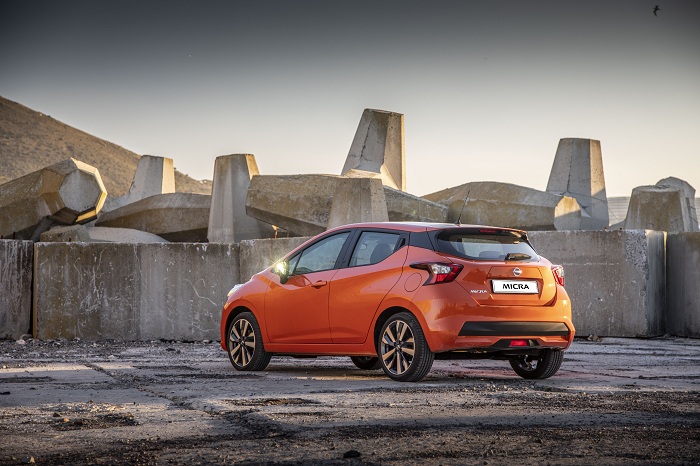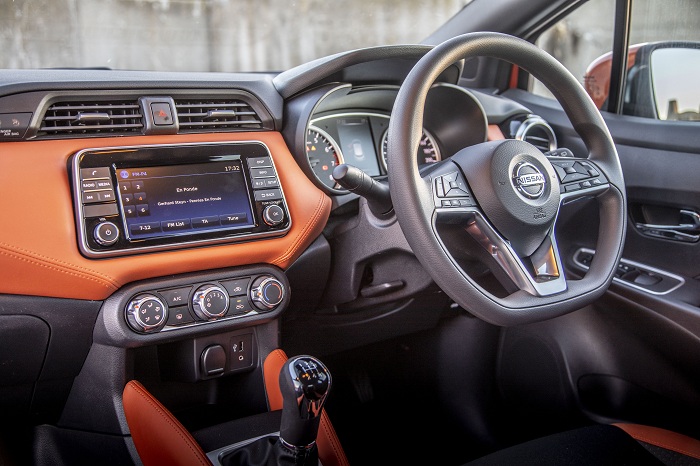The K13 then took its place some years later but failed to capture the sort of market share enjoyed by similarly price Volkswagen and Toyota products.
In 2017, Nissan introduced a budget version of the K13, called the Micra Active, which meant that the new Micra’s arrival was imminent. A few months ago, the latest K14 Micra made its local debut, and more recently, I spent a week in the mid-spec Acenta model.
Styling revolution
The Micra’s of old seemed to split opinion with their quirky design language, however, the latest version is certainly destined to find more fans than haters. The brand’s V-Motion grille dominates the front-end, while the upsweeping headlamps match the rather curvy shoulder line.

In side profile the Micra, is dominated by the 16-inch diamond-cut alloy wheels and the integrated rear door handles. The rear-end features sharply-styled taillamps and rather aggressive angles, which complete a design that, overall, looks far sportier than before and certainly distinguished itself from the current Renault Clio on which it is based.
Interior improvements
The interior of the Micra is a rather pleasant place to be with my press unit featuring beige material inserts on the centre console, which are matched by the two-tone beige/grey seats that brighten-up the cabin considerably. The general fit-and-finish as well as material quality is what one would expect from a car competing in this segment with no real negatives to report.

Another focal point is the seven-inch touchscreen infotainment system which is an all-new unit that incorporates Apple CarPlay, Bluetooth and USB. The system does the job, but doesn’t feature the best resolution within the segment. Other niceties inside include some standard equipment within the Acenta model including cruise control, automatic headlamps, six airbags, stability control, a five-inch TFT instrument cluster and a multi-function steering wheel.
The Micra is also improved in the practicality stakes, with a length of just under four-metres, a width of 1 743mm and a height of 1 465mm which equates to respectable space for front passengers, adequate space for rear occupants, and a boot that measures 300-litres or up 1 004-litres with the rear seats folded down.
Driving Micra
Being based largely on the Clio as mentioned, the Micra makes do with the same 898cc three-cylinder turbo-petrol engine that produces 66kW/140Nm. The engine does exhibit quite a bit of turbo-lag, but does haul the Micra along nicely, mostly because it weighs around the 1 000kg mark.
Nissan claim a combined fuel consumption figure of 5.1-litres/100km, which I found was just about achievable in perfect driving conditions, however, my weekly commute is far from perfect, which resulted in a combined figure of 7.2-litres/100km.
The Micra range is only available with a five-speed manual gearbox and despite the ‘box being perfectly acceptable for a B-segment commuter car, I feel that the addition of an automatic would broaden the Micra’s appeal.
Verdict
The latest Micra is certainly a massive departure from the previous generation, and Nissan has certainly done a good job of disguising the Micra’s Renault roots, however, the likes of the new Volkswagen Polo and Ford Fiesta exist and offer a seriously impressive packages and more extensive ranges to the customer out there. This leads me to conclude that the Micra remains a left-field choice, sans the quirks of yesteryear, though.
















